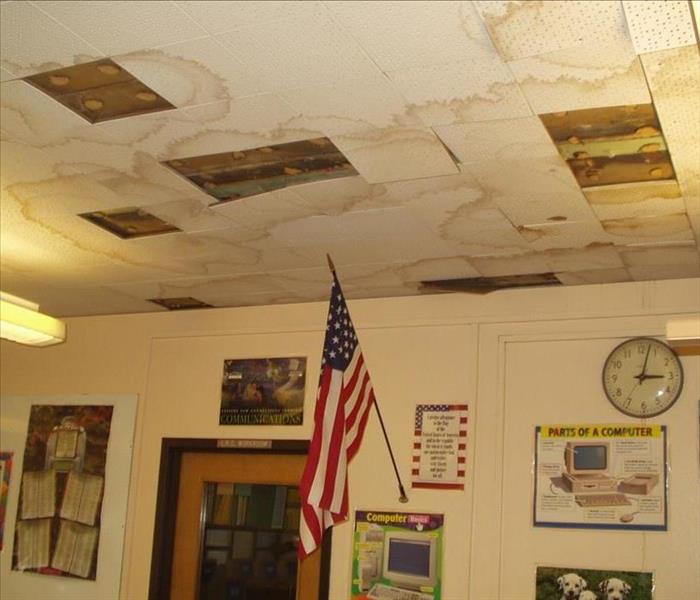Preventing Mold in Commercial Properties
11/20/2019 (Permalink)
 Commercial properties like schools should take precautionary measures to ensure any water damage incidents do not lead to mold growth
Commercial properties like schools should take precautionary measures to ensure any water damage incidents do not lead to mold growth
Mold growth in your commercial property can lead to structural damage to the property itself and health concerns for those exposed to it. There are many factors that can lead to mold growth as well as steps that can be taken as preventative measures. This article will cover both to keep you, the business manager or owner, better informed and prepared to handle a mold situation.
How Mold Can Spread in Commercial Properties
Mold thrives in damp, dark places. So you can find mold just about anywhere that moisture lingers in the air. Mold spores can cling to and grow on a variety of building surfaces including stone, brick, wood, drywall, and metal.
Here are three factors that contribute to the formation and spreading of commercial mold.
1. Moisture Due to Humid Conditions
When outside temperatures fall during the fall and winter seasons, mold often begins to form indoors where the air is warmer and more humid.
You can sometimes see condensation forming on the interior of glass windows and skylights. If this moisture drips down the walls and manages to penetrate into seams and cracks in the walls, it is very likely that mold will begin to grow.
2. Water Leaks From Roof and Plumbing
One of the biggest causes of mold infestations is leaks in the roof or leaky pipes in the walls. These leaks often go undetected for months or even years, allowing massive colonies of mold to fill the spaces in attics and inside walls and ceilings.
This water damage combined with mold can cause tens of thousands of dollars in damage, and it often will require entire facilities to be shut down for mold restoration and remodeling.
3. Condensation forming in an HVAC system
Other troublesome spots where mold forms in commercial buildings are the heating, ventilation, and cooling (HVAC) system. Due to the heating and cooling of the metal ducts and vents, condensation often forms on these surfaces that are hidden away from view. These dark, damp places become a breeding ground for various types of mold.
And the worst part is that the ventilation system then blows mold spores throughout the entire building. Those spores can lie dormant for a very long time. But once they come in contact with moisture, they can begin to grow and spread.
How to Prevent the Spread of Mold in Commercial Properties
Preventing the spread of mold should be a high priority for commercial property managers. Whenever mold or water leaks are discovered, swift action must be taken to prevent further growth and damage. Here are three strategies that need to be implemented consistently.
1. Inspect Moisture-Prone Areas Regularly
As noted above, the HVAC system needs to be routinely inspected for mold and moisture, particularly the evaporator coils and drain pans and pipes. Surfaces should be inspected, cleaned and disinfected once a year or more if necessary.
Roof tiles should also receive a professional inspection annually, and attic spaces should be checked for water damage too.
All kitchen and bath areas should be checked, including in the backs of cabinets and vanities, as mold thrives in dark spaces. And again, all surfaces should be cleaned regularly.
2. Clean and Disinfect All Surfaces Frequently
Routine cleaning cannot be emphasized enough. Not only should areas when mold and moisture are spotted be cleaned thoroughly, but all floors, walls and counter spaces should be disinfected regularly to kill spores that lie dormant.
3. Use Dehumidifiers to Reduce Moisture in the Air
Lastly, some commercial buildings that have routinely humid conditions might benefit from the use of dehumidifiers placed throughout the building or in conjunction with the HVAC system. These remove excess moisture from the air and make it difficult for mold spores to grow.
Fighting commercial mold can be a challenge for business owners and commercial property managers, but by knowing what to look for - and by engaging in consistent and thorough cleaning practices - mold can be kept in check to provide a safe environment for everyone.





 24/7 Emergency Service
24/7 Emergency Service